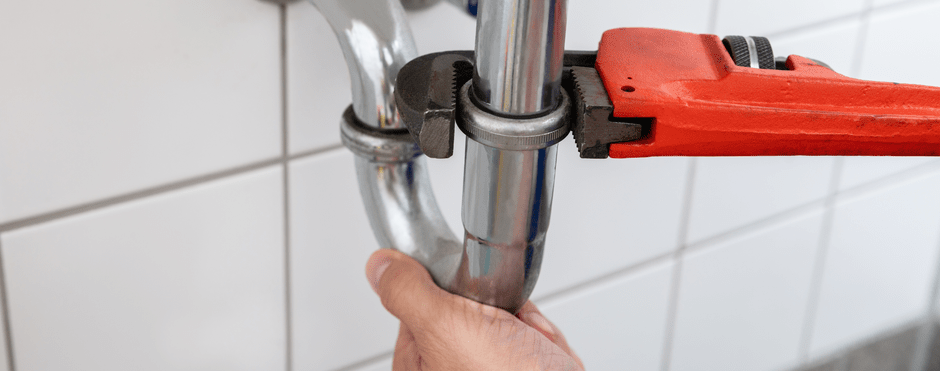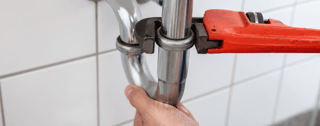Plumbing venting and why it’s important
Learn the ins and outs of the plumbing vent and what it can do for you

Plumbing vent: key tips to remember
- Pipes on the roof are not there for decoration; they’re plumbing vents
- Plumbing vents help equalize pressure and vent smelly, harmful gases
- Without ventilation, your drainpipes can back up or even break
- Functional plumbing vents increase the efficacy of your drainpipes
- Plumbing vents are like lungs for your home; keep them clean
Stop right there. Before you punch “plumbing vent roof” or “sewer vent pipe” into your search engine, rest easy because we have the information you need in this post. We’ll go in-depth on the humble plumbing vent, sometimes known as a bathroom vent pipe, vent stack or roof vent pipe. An essential component of every home, the vent pipe or drain vent (let’s just keep calling it a plumbing vent, shall we?) is an essential component of every home. It sticks out of your roof, typically with a rubber ring around the base. It might not appear directly over every bathroom, as plumbing vents are sometimes connected in the attic and combined into a single pipe that vents somewhere on the roof.
What is it?
A plumbing vent is a vertically oriented pipe that sticks out of your roof. Many homes have more than one. Its job is to regulate air pressure and vent methane gas from your home’s plumbing system, along with any related, unwelcome scents. Allowing a little fresh air into the system, it remains dry but connects to the actual sewer drainpipes, helping them achieve adeqwwwe suction to drain more effectively. A plumbing vent also helps prevent plumbing clogs by allowing gas to vent before it can build up, cause a problem and damage the system.
Why is it important?
Draining and venting are separate but connected systems that work together to keep your plumbing system functioning optimally. They remove liquid and solid wastes, water, gases and related smells. As drainpipes remove these liquids and solids and send them on their way to your sewer or septic system, vent pipes (your plumbing vent) keep the fresh air flowing to help those drainpipes keep draining — such as whenever a sink drains or a toilet flushes — while maintaining an avenue of escape for smelly gases. You need a plumbing vent to work consistently if you want your entire plumbing system to function as it should.
How it works
Running vertically through your home’s interior after connecting perpendicularly to a drainpipe, your home’s plumbing vent is typically housed within walls before emerging through the roof to off-gas. Sometimes a plumbing vent detours through the attic first, where it might connect with other similar vent pipes coming from other bathrooms. Helping to regulate pressure in the drain while vacating gas and smells, the plumbing vent is a crucial component of a healthy, functioning plumbing system.
Health risks
Speaking of health, the last thing you want is to have methane gas leaking into your home. Every plumbing fixture needs adequate ventilation to ensure that this potentially harmful gas escapes via the roof outside the home. A single methane leak can cause nausea, sickness and worse if left untreated. Prioritize your family’s health by ensuring adequate ventilation. If you’re concerned about your plumbing system in other ways, consult our post on common plumbing mistakes you might be making without even realizing it.
Warning signs
If you’re having trouble with your plumbing system, you may also want to review our guide to home plumbing systems. Warning signs of problems with a plumbing vent include slow drains, standing water in sinks or tubs, gurgling sounds from drains or awful smells. If you experience these signs, you may need to try drain cleaners, plungers, augers or snakes to remove clogs. If the clog is removed from the drainpipe and you still notice these signs, you may have a plumbing vent clog and need professional assistance.
Clog culprits
Causes for a plumbing vent clog can include debris from the roof, like sticks and leaves, or even a bird’s nest. Another potential cause for the clog can be a dry or missing P-trap. Found under sinks and in bathroom shower drains, P-traps are U-shaped pipes that contain a little water. When functioning correctly, they prevent gases from escaping back up the pipes and into the home. When homes have been vacant for a while, the water in a P-trap can evaporate because water has not been running through the system in some time.
Releasing pressure
While some fresh air is allowed in through the open drains and the open vent on the roof, the main job of the plumbing vent is to vent the plumbing system’s drainpipes, releasing the pressure that gas buildup can create and keeping the drains running smoothly. When a vent clogs, air can’t escape and pressure builds. When your plumbing vent system is working properly, it works in tandem with your P-trap to prevent sewer gases from escaping into the home while also releasing air pressure and gases into the sky above the roof.
Keeping it clear
Avoiding clogs in the vent is the best way to keep your system healthy and efficient. Make sure you check on your rooftop vent from time to time, like when you’re cleaning gutters. If you (or someone you’ve hired) can inspect the vent pipe, make sure the rubber collar isn’t cracked and that its seal is intact. Remove any organic material in or around the pipe. Contact a professional if you suspect you have a clog in the vent pipe.
Pro-level help
There’s more than one reason to consult a professional if you think you have a serious plumbing issue. Sure, it’s great when you can DIY and get things back into shape without help and the extra expense of pro-level assistance. However, even if you successfully manage to clear any drain clogs, eliminate gurgling sounds and stop recurring standing water in sinks or tubs, you could still have a clogged plumbing vent that’s causing weird smells. This could mean there’s a nest in the pipe somewhere between the roof and your plumbing fixtures. It could also cause additional damage if the pipe bursts. It could also mean gas buildup in the home that can lead to sick inhabitants. If you’ve tried plungers, augers, snakes and new P-traps and still suspect a problem, call the professionals.
Home warranty coverage
While you’re here, you might be wondering whether a home warranty covers the main water line to your home or the plumbing you rely on every day. Plumbing is a good reason to get home warranty coverage for your home’s major systems and appliances. Major plumbing repairs can be incredibly expensive, and home warranty coverage can help eliminate costly financial surprises while giving you peace of mind. Knowing that you’re protected from these potentially costly surprises for a small monthly fee and that a seasoned team of local professionals has your back and is only a phone call away is worth a lot. Home protection plans from Cinch can make it easy and affordable to find that peace of mind.
The information in this article is intended to provide guidance on the proper maintenance and care of systems and appliances in the home. Not all of the topics mentioned are covered by our home warranty or maintenance plans. Please review your home warranty contract carefully to understand your coverage.



